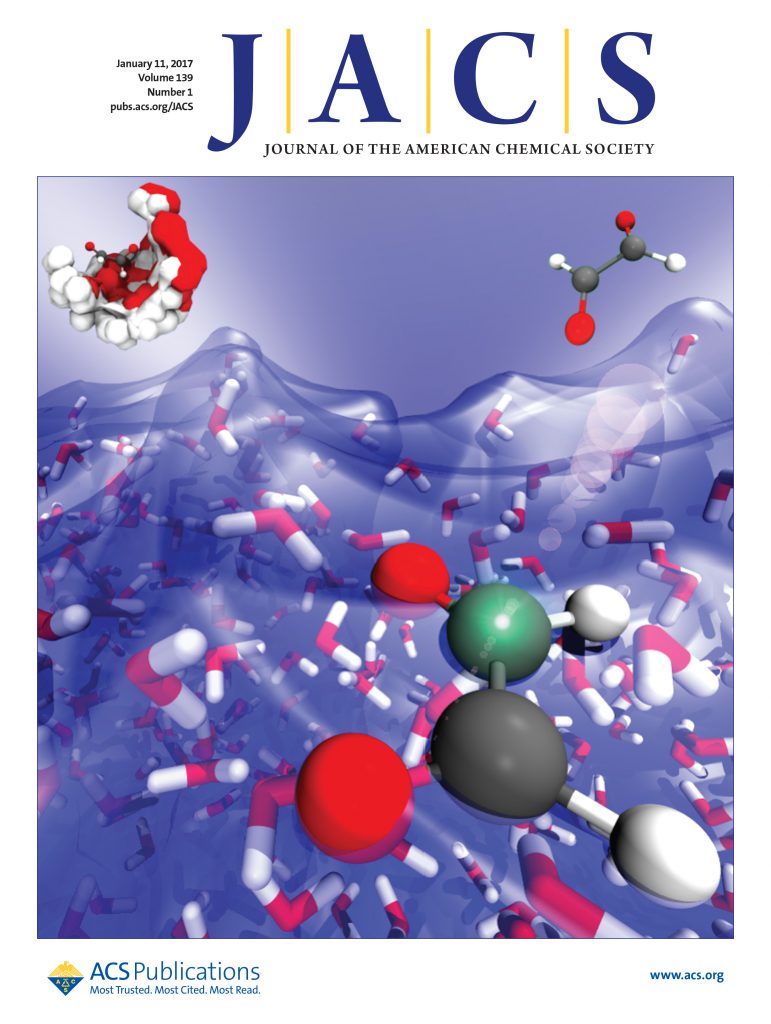Self-Assembly of Alkynylplatinum(II) Complexes for Sialic Acid Detection and Differentiation of Cancer Cells from Normal Cells
IF 15.6
1区 化学
Q1 CHEMISTRY, MULTIDISCIPLINARY
引用次数: 0
Abstract
A series of platinum(II) complexes incorporating a histidine moiety and/or positively charged group has been designed and synthesized to explore the specific binding between platinum(II) complexes and the analyte and their sensing ability. The specific hydrogen bonding between the histidine moiety and sialic acids, and the electrostatic interaction between the positively charged trimethylammonium group of the platinum(II) complexes and negatively charged carboxylate groups of sialic acids have been found to enhance the binding affinity. The supramolecular assembly of platinum(II) complexes upon binding to sialic acids induces remarkable luminescence changes due to noncovalent Pt(II)···Pt(II) and π–π stacking interactions, achieving sensing and visualization of sialic acids. A novel luminescence assay has been developed to differentiate cancer cells from normal cells based on the supramolecular assembly of platinum(II) complexes upon binding to a high level of sialic acids due to its excellent imaging ability toward sialic acids in live cells. The complexes have been adopted to visualize the variation of sialic acids in live cells after treatment with enzymes to remove sialic acids, paving the way for screening of novel anticancer agents. The present sensing strategy for differentiating cancer cells from normal cells facilitates early diagnosis and therapeutic guidance.

自组装炔基铂(II)配合物用于唾液酸检测和癌细胞与正常细胞的分化
设计并合成了一系列包含组氨酸片段和/或带正电荷基团的铂(II)配合物,以探索铂(II)配合物与分析物之间的特异性结合及其传感能力。组氨酸部分与唾液酸之间的特殊氢键,以及铂(II)配合物中带正电的三甲基铵基团与带负电的唾液酸羧酸基团之间的静电相互作用增强了它们的结合亲和力。铂(II)配合物与唾液酸结合后的超分子组装,由于非共价Pt(II)···Pt(II)和π -π堆叠相互作用,引起了显著的发光变化,实现了唾液酸的传感和可视化。基于铂(II)配合物与高水平唾液酸结合后的超分子组装,由于其对活细胞中的唾液酸具有优异的成像能力,因此开发了一种新的发光测定方法来区分癌细胞和正常细胞。这些配合物已被用于可视化酶去除唾液酸后活细胞中唾液酸的变化,为筛选新的抗癌药物铺平了道路。目前癌细胞与正常细胞鉴别的传感策略有助于早期诊断和治疗指导。
本文章由计算机程序翻译,如有差异,请以英文原文为准。
求助全文
约1分钟内获得全文
求助全文
来源期刊
CiteScore
24.40
自引率
6.00%
发文量
2398
审稿时长
1.6 months
期刊介绍:
The flagship journal of the American Chemical Society, known as the Journal of the American Chemical Society (JACS), has been a prestigious publication since its establishment in 1879. It holds a preeminent position in the field of chemistry and related interdisciplinary sciences. JACS is committed to disseminating cutting-edge research papers, covering a wide range of topics, and encompasses approximately 19,000 pages of Articles, Communications, and Perspectives annually. With a weekly publication frequency, JACS plays a vital role in advancing the field of chemistry by providing essential research.

 求助内容:
求助内容: 应助结果提醒方式:
应助结果提醒方式:


